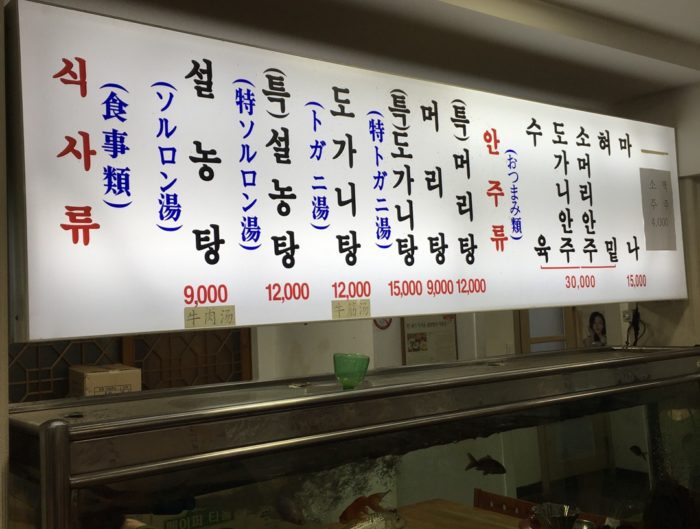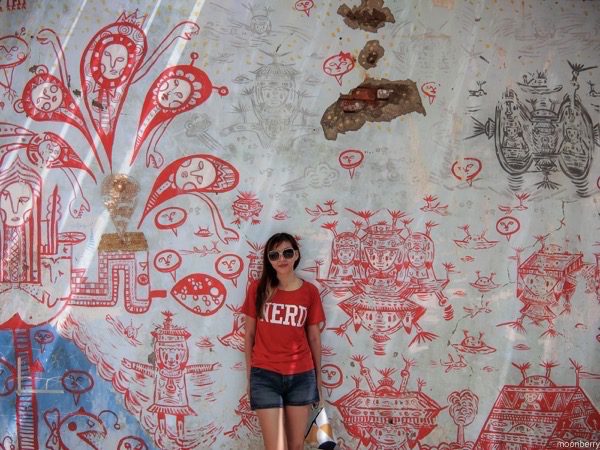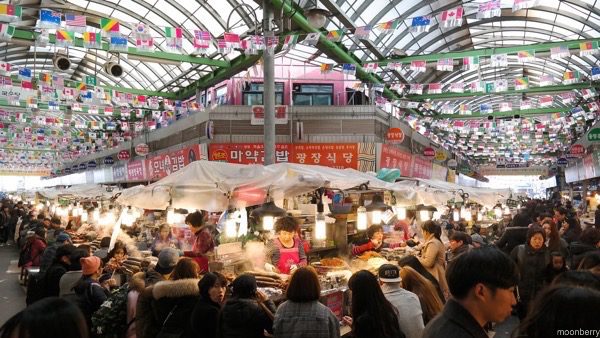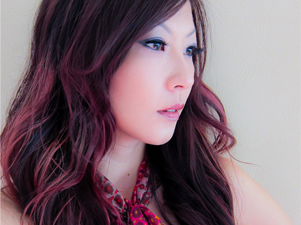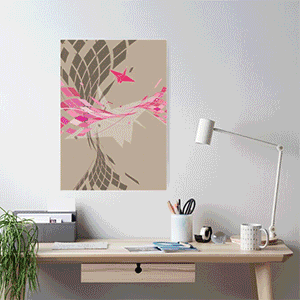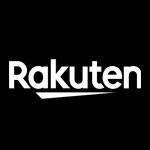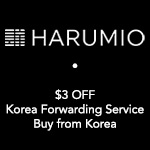Visiting the Noryangjin Fish Market in Seoul is a highlight of any trip to Seoul. It is easy to get overwhelmed here, especially with so many vendors hawking an array of fresh live seafood. It’s also a challenge being a foreigner, and not speaking the local language.
Here’s my Noryangjin fish market guide on how to experience this specialty market at the fullest. I’ve got a really useful tip on how to prevent getting ripped off here, so please read on.
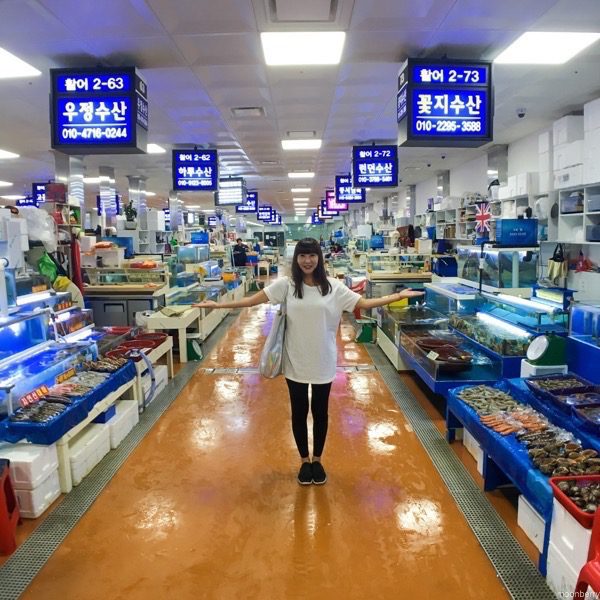
Getting To Noryangjin Fish Market
The easiest way to get here is by subway. Take the Seoul subway to Noryangjin Station (Lines 1 and 9). From Exit 1, walk over the train tracks via the overhead bridge leading to the parking lot, following the English signage. Go down the stairs to get to the market.
Note that this is the older open-air part of the market and while it’s tempting to start buying here right away, I recommend heading to the newer air-conditioned building instead.
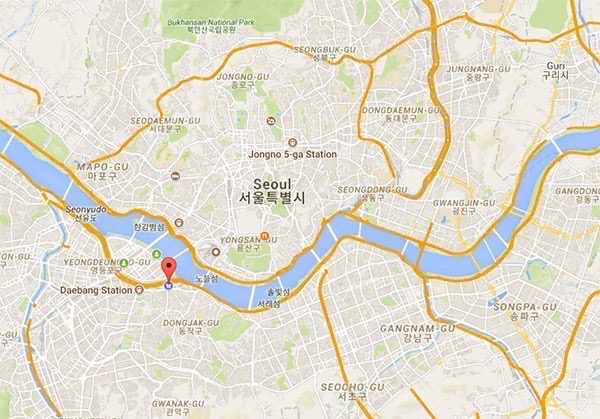
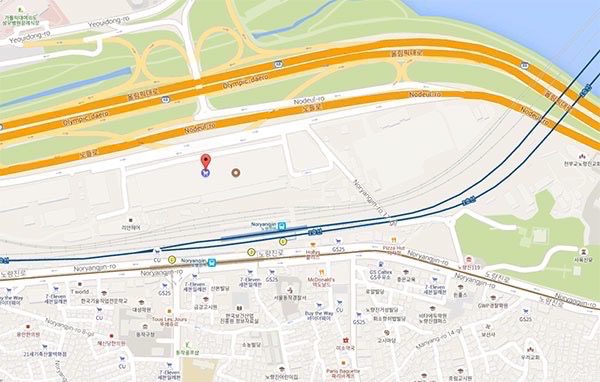
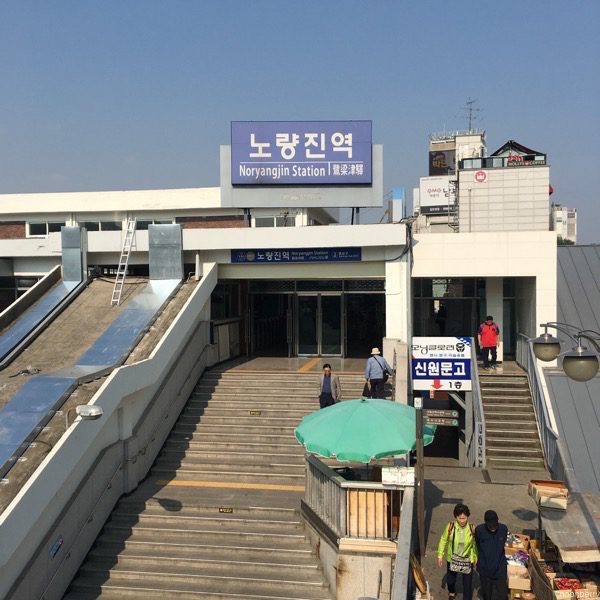
The exterior view of Noryangjin Station (subway) with the overhead bridge that brings you directly to the seafood market.
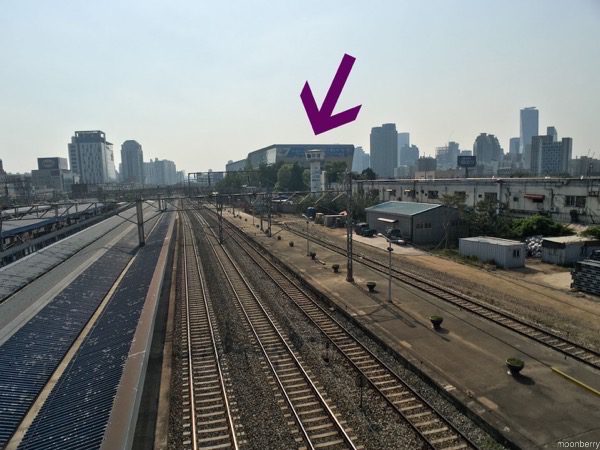
From a distance you can see the Noryangjin Fish Market building. Viewed from the subway station.
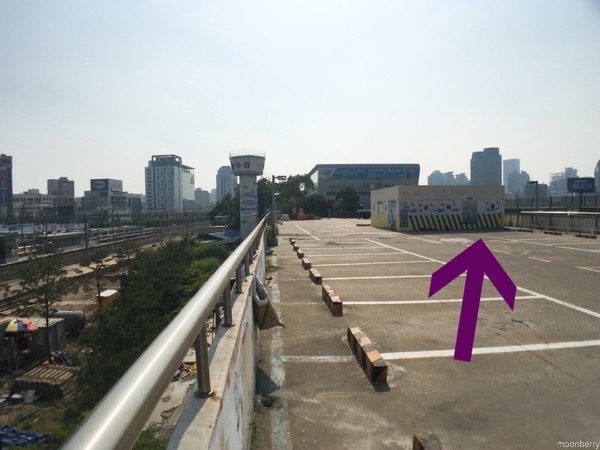
There is no need to get down to the street level because the overhead bridge from the subway station leads you to an outdoor carpark above ground. There’s a door that you can enter into the fish market from this carpark.
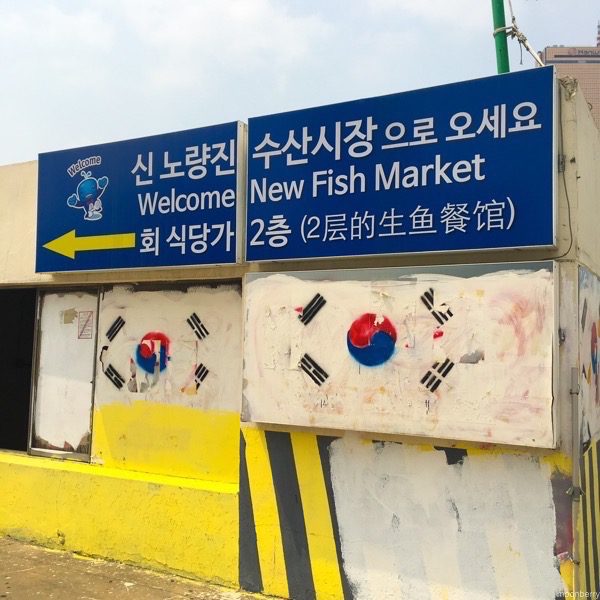
Follow the printed directions. You will see stairs that bring you down to the older part of the fish market.
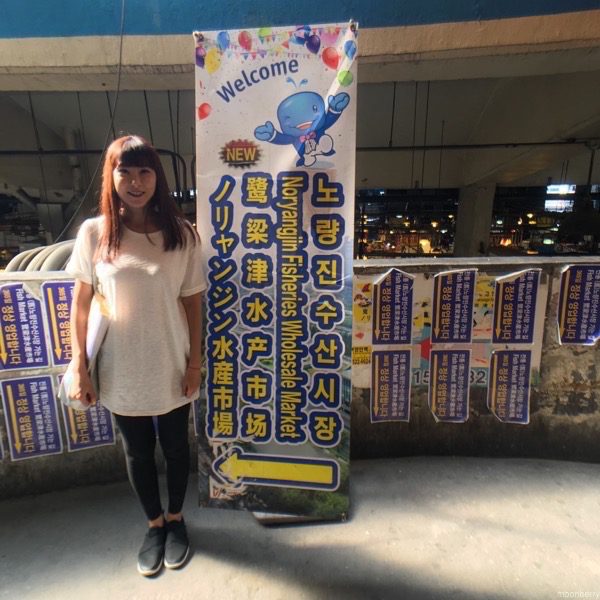
The older open-air part of the market, directly underneath the outdoor carpark above.
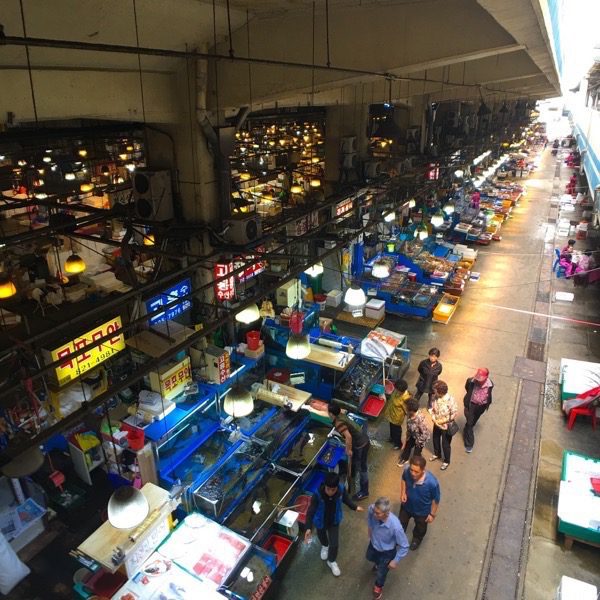
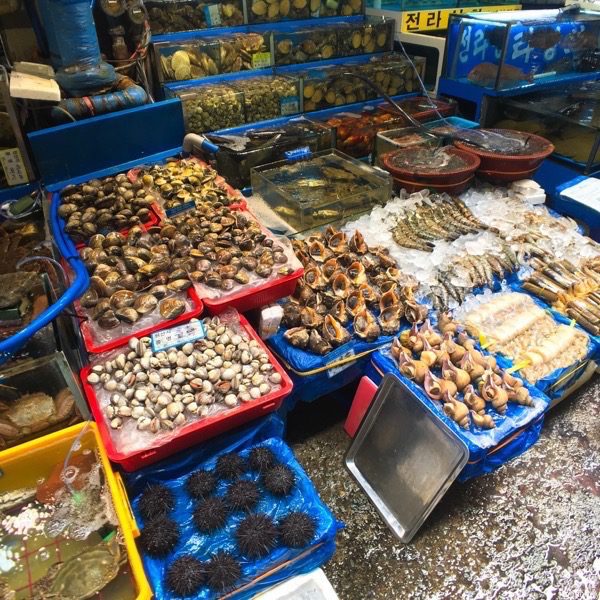
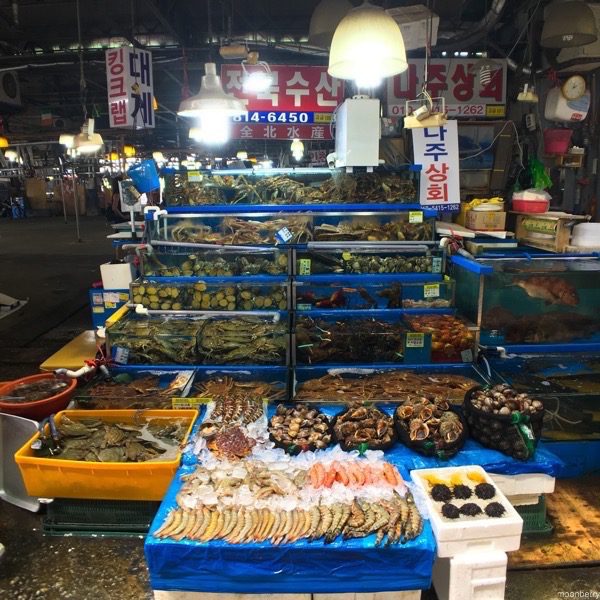
The newer, air-conditioned building. You can access this from the ground floor of the older market. Just keep walking straight and away from the subway station/outdoor carpark area. You will see this newer building right in front of you.
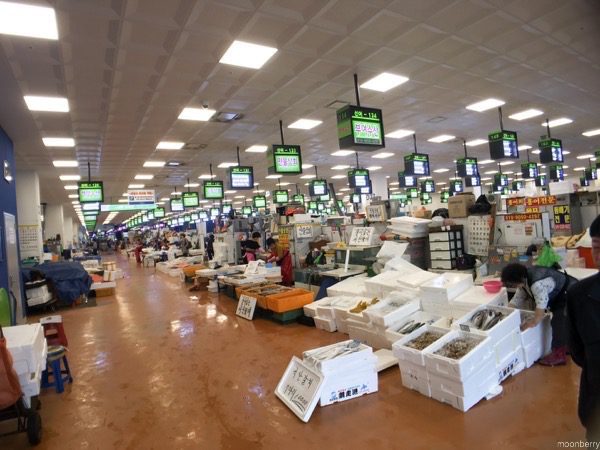
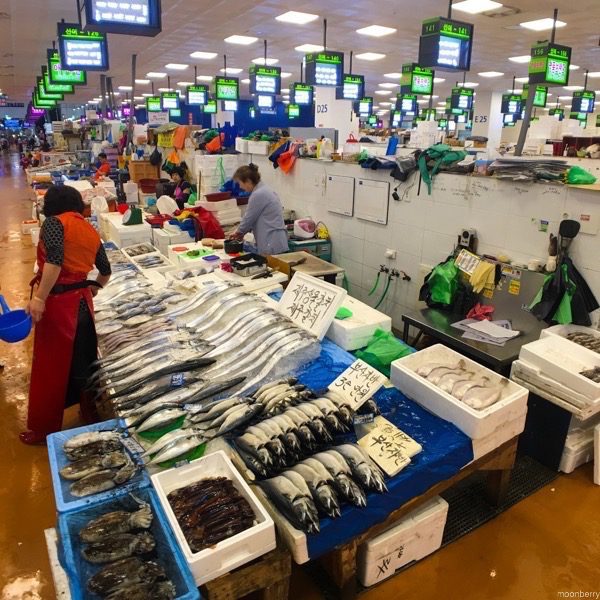
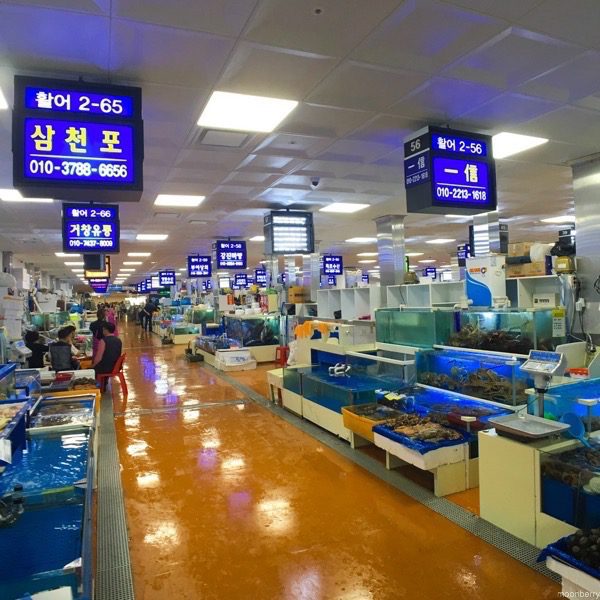
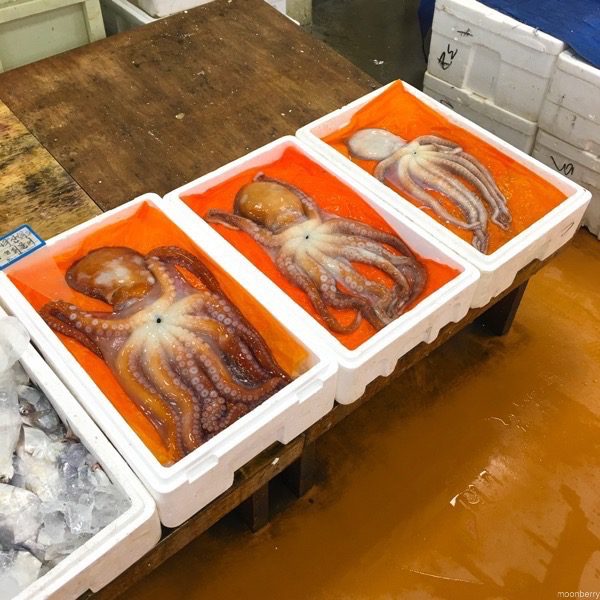
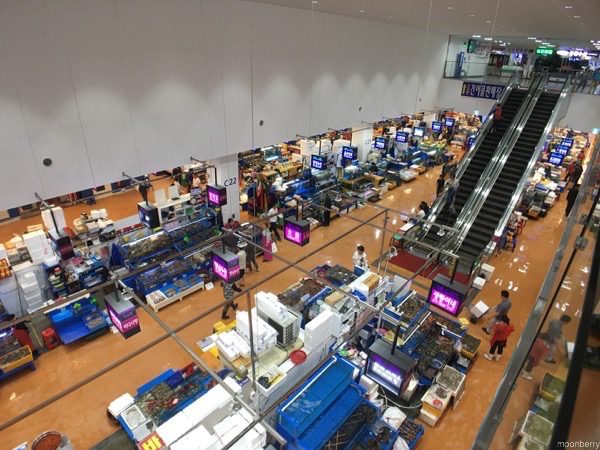
How To Be a Savvy Seafood Shopper
1. Browse your seafood first before buying.
Personally I shopped at the second floor in the newer air-conditioned building.
Shortlist the seafood that you want to eat but don’t purchase immediately until you load up this website on your phone: http://www.tpirates.com. This website gives you a sense of what the market prices here are so that you can (i) avoid getting ripped off, and (ii) haggle effectively.
The website is in Korean but the listed pictures are very helpful in knowing, for example, how much a kilogram of live lobster is supposed to cost or what the typical cost for live abalone is according to current market price.
The website is mobile-friendly, so scroll down to the images of people (these are vendors) and click on any of them to load the range of published Noryangjin fish market price for specific seafood.
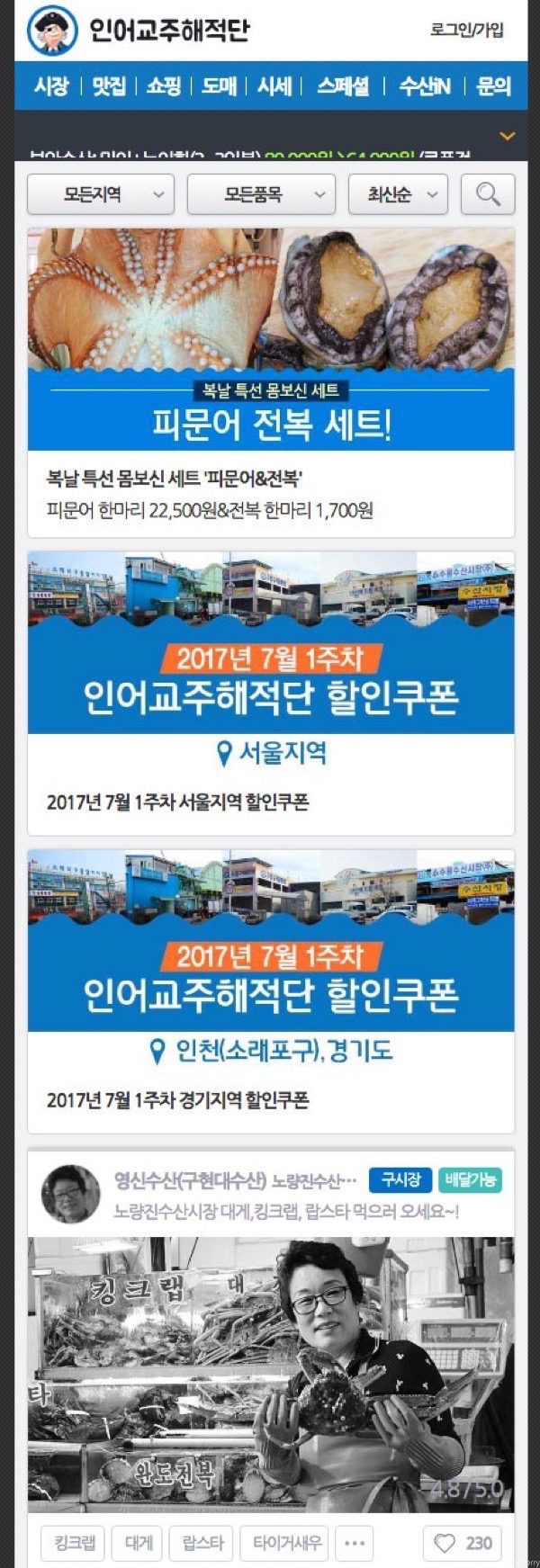
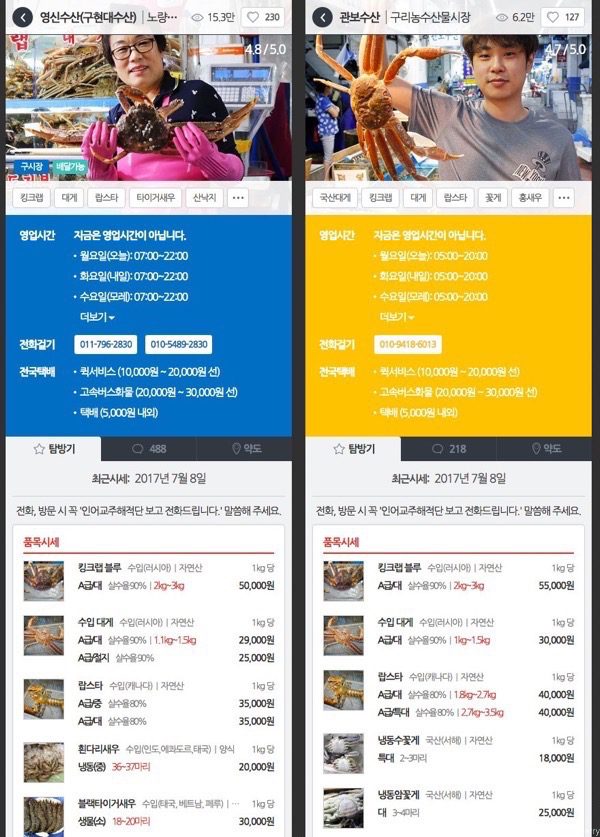
Here, you will see different vendor profiles with their published price list as well as rating.
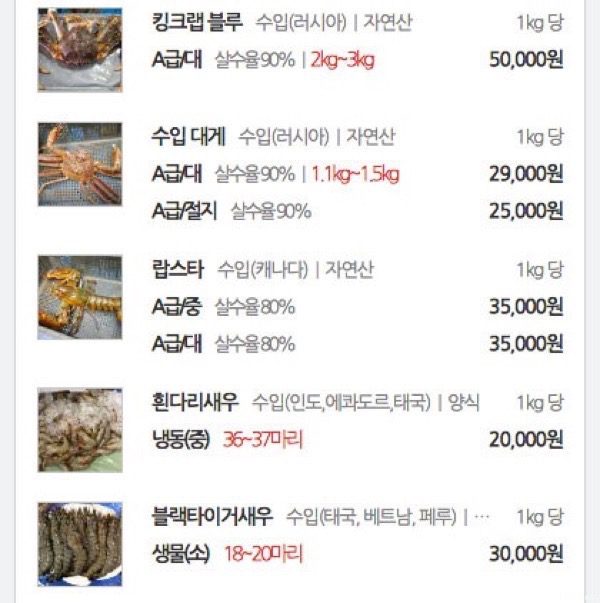
Can’t read Korean? No problem. Just look at the photos and take note of the listed prices.
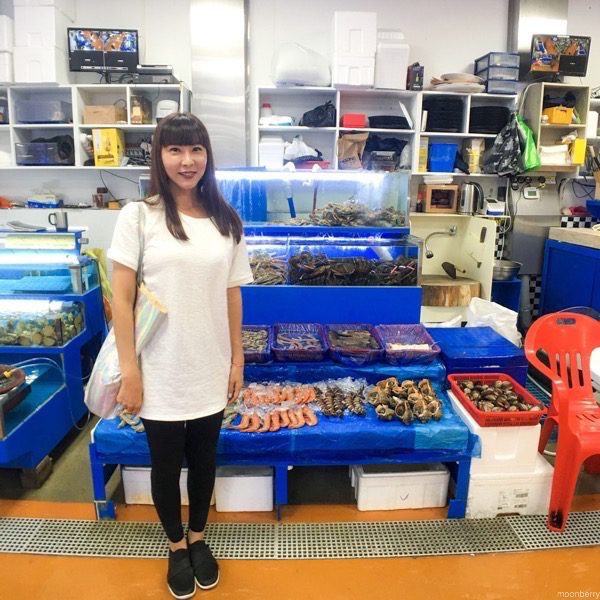
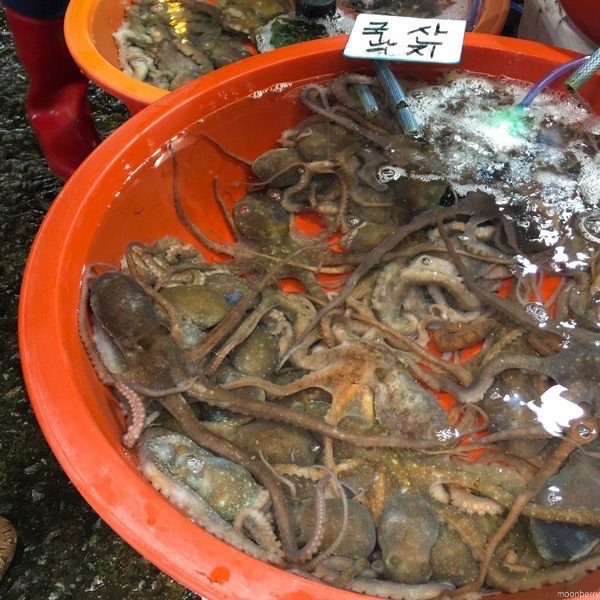
Prices shouldn’t vary too much from one vendor to another, so go ahead and select the best looking seafood according to your preferences. I bought all my seafood at one go from one vendor, instead of hopping around from one stall to another. They all sell just about the same things anyway and I want to quickly eat my purchases. Haggling is expected so please don’t be shy.
Both times I managed to also specifically ask for crabs with roe. How? Many of these vendors can speak Chinese (phew, happy and relieved to be a polyglot!). I was able to request my roe-filled crabs and even solicit serving suggestions. For the most part, the vendors here are really nice and will throw in freebies, like a handful of prawns or upgrade your purchase with a heavier item at no extra charge. Kamsahamnidaaa~ :) :) :)
2. Pick your restaurant on the second floor.
After paying for your fresh seafood, start heading to the row of restaurants on the second floor (at the far right, if you’re coming up from the escalator). Bring your ocean goodies into at least two or three restaurants and have them work out a cost to prepare the seafood for you. You can get a quotation first before deciding on the restaurant.
Generally there are several ways to prepare your seafood purchases, namely: steaming, grilling, made into soup/stew, served raw, and stir-frying (this one is usually with fried rice). The restaurant staff normally will recommend the cooking method, but you can also request a different style. They will be happy to accomodate if they can, although their recommendation is often the best way to enjoy your particular seafood item.
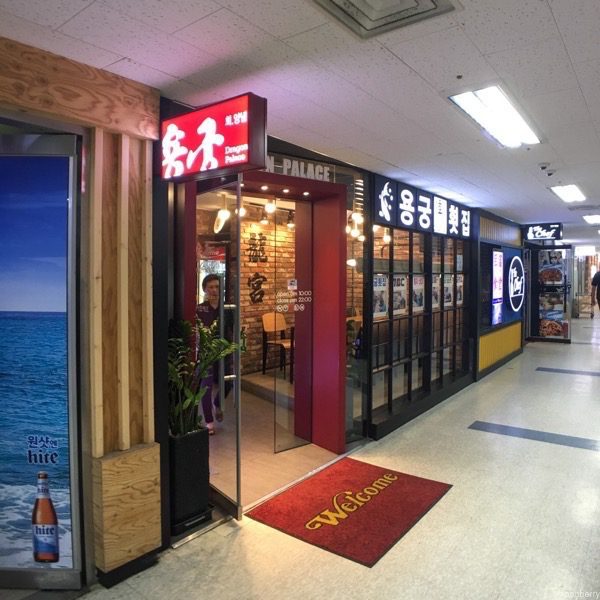
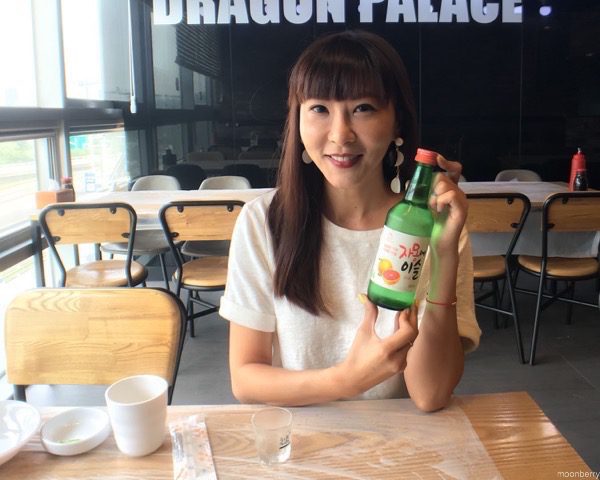
Take note: In addition to the food preparation cost, there’ll be a basic service fee. This is a nominal sum that covers the use of utensils, wet naps, kimchi, dipping sauces, that sort of thing. Standard for every restaurant inside Noryangjin, so don’t be alarmed.
Additional items that you plan to consume along with your seafood, such as soju or other beverages, can be purchased in the restaurant and will be added to your total bill.
I’ve noticed that the prices quoted vary from restaurant to restaurant, so take your time and go with the one that you feel is most reasonable. Also, some restaurants will either charge you extra or totally refuse to cut/crack open crab shells on your behalf – so it’s good to ask first. They will provide scissors and plastic gloves upon request though.
On with food pix! *rubbing palms excitedly*
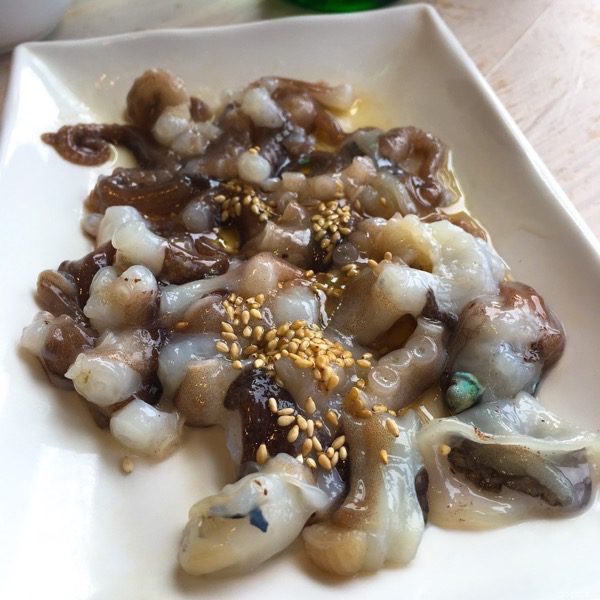
I just had to try live baby octopus for the first time! Visually it’s disturbing, because these chopped up bits are still actively wriggling in the plate. It’s quite challenging to try pick ’em up with chopsticks. But believe you me, it’s harmless. In fact it’s crunchy and the sesame oil seasoning tastes great. Perhaps not recommended for the weak of heart, but why pass up this rare food adventure? A few bites is all it takes. (Tip: please chew the live baby octopus really well before swallowing.)
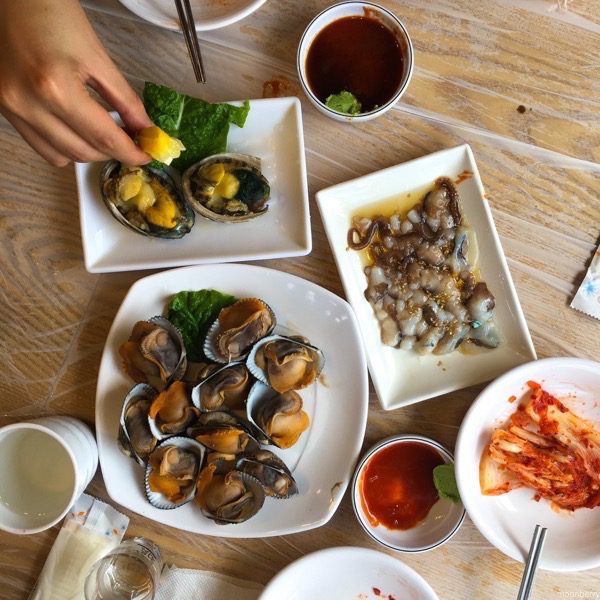
Grilled abalones (4 pieces for ₩10,000 market price), and a bunch of large plump cockles (which you don’t get to see at all in Singapore).
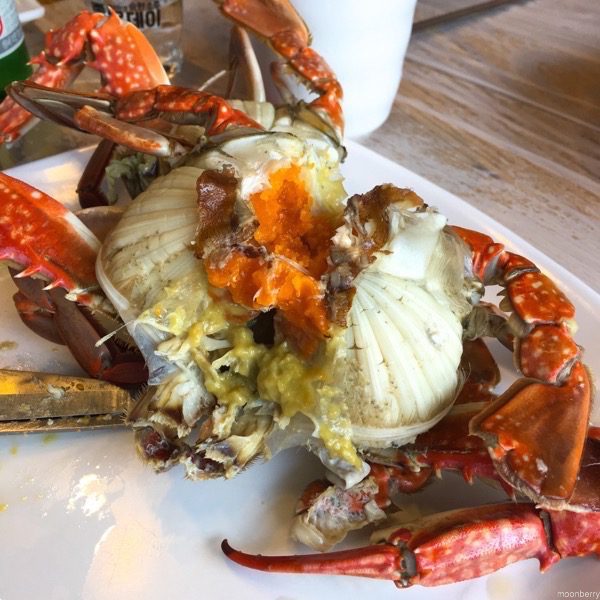
Crab roe! :: heart eyes ::
This crab was prepared via plain steaming. Delicious and naturally sweet.
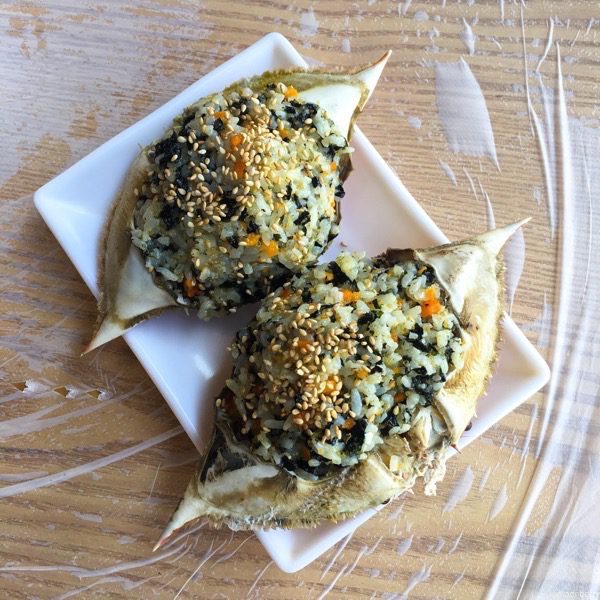
We requested for some of the roe to be incorporated into fried rice and this turned out to be yum-o.
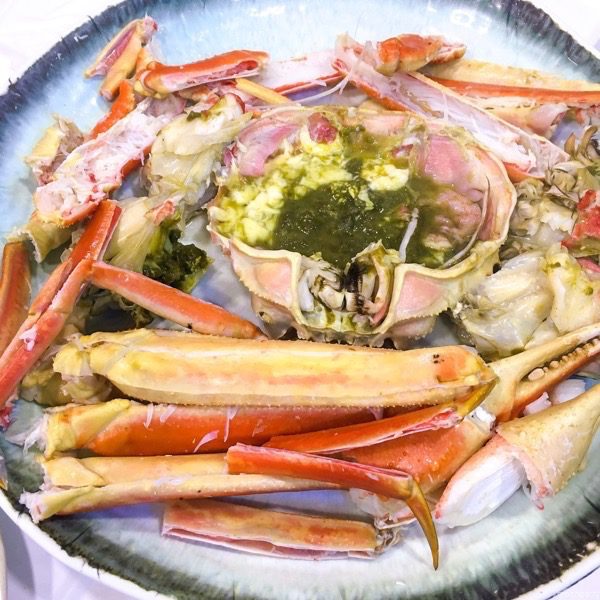
During my SECOND visit to Noryangjin Fish Market, I tried another variety of crab which came with roe alright but it was watery. Interestingly, the crab meat was ultra sweet! The restaurant staff even taught me how to eat this watery roe: dip the crab meat into the watery roe for a boost of flavor.
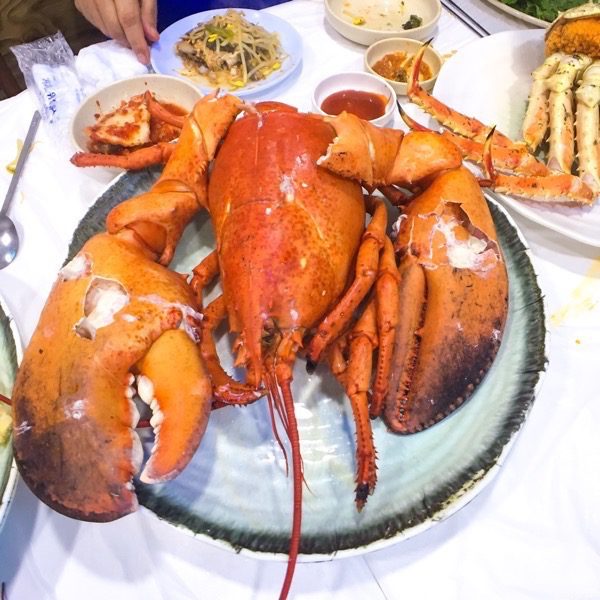
Also had a gigantic lobster that was prepared two ways: the claws were steamed while the body was eaten sashimi-style (not shown, but outrageously delicious~).
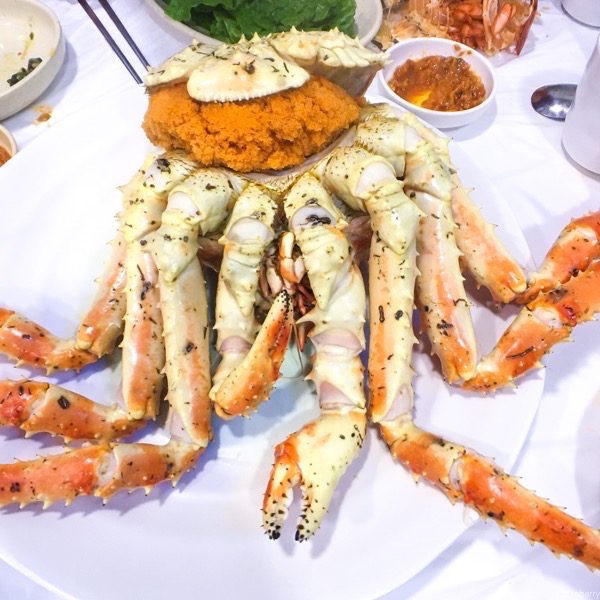
Last but not least, some of you may have already seen this posted on my Instagram @moonberry. This is another type of crab and while the meat wasn’t as sweet, it was adequately succulent. But the grand prize here had to be the crab roe that was spilling out of the shell. O_O
I’d never encountered such a disproportionate roe to meat ratio in a single crab before! *SQUEALS* This was definitely worth it, it only cost ₩50,000 at the fish market! What an incredible bargain.
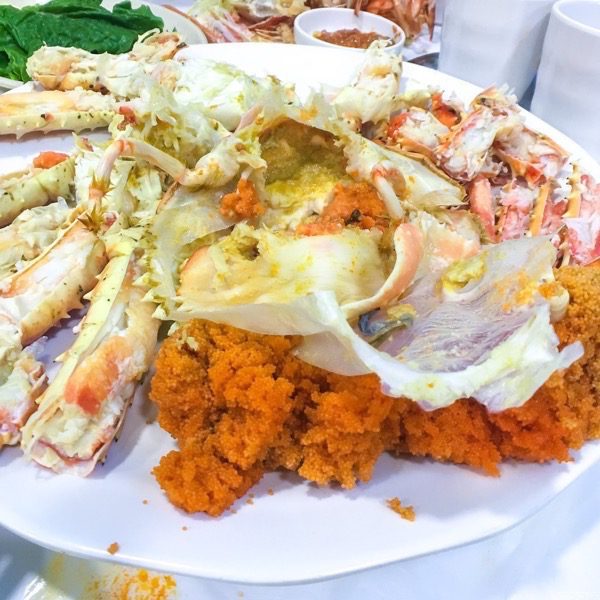
No trip to Seoul is complete without a visit to Noryangjin Fish Market. I went there twice and both times I had a great experience.
On my first visit, we spent a total of ₩50,000 for two people (crab, abalone, cockles, baby octopus). This expense includes the restaurant charges.
On my second visit, we spent a total of ₩300,000 for eight people (lobster, two different kinds of crabs, flat fish sashimi, prawns, abalone, baby octopus, spicy fish stew). This expense also includes the restaurant charges. O_O?! Super affordable if you ask me.
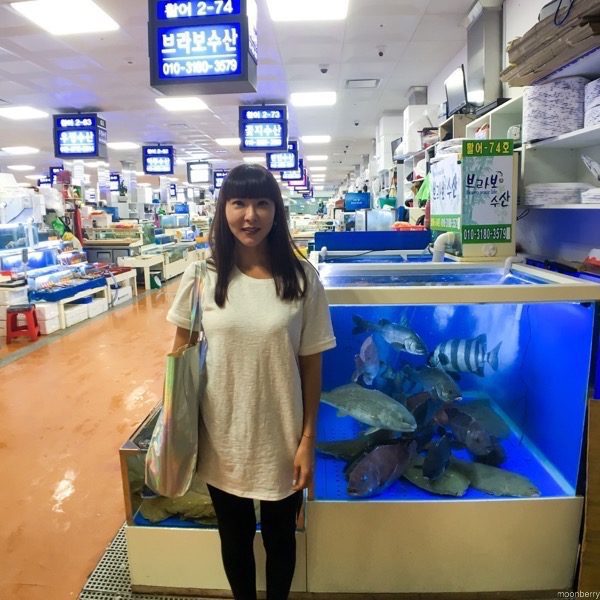
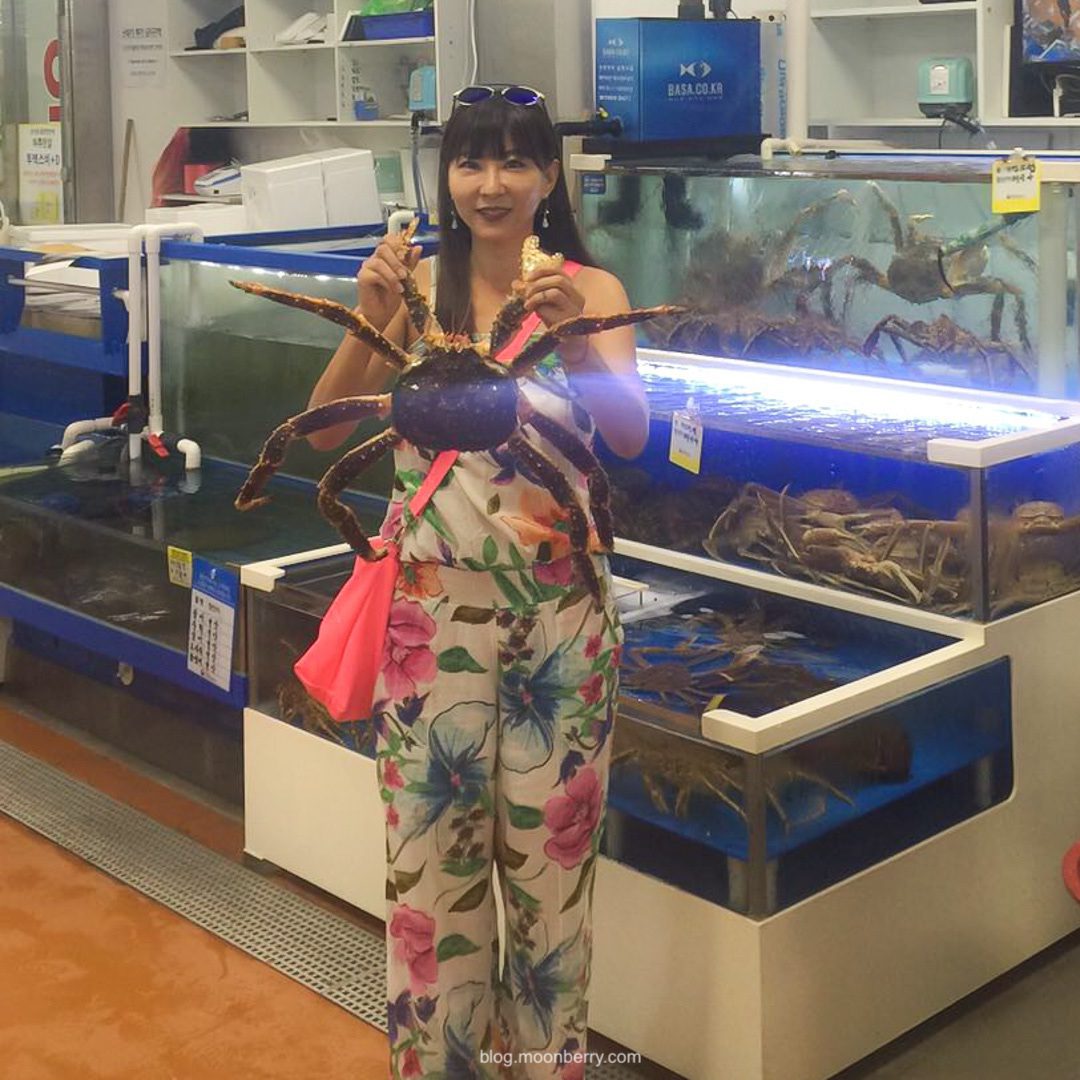
Compared to Tsukiji in Tokyo and Addiction Aquatic Development in Taipei, I’d say this Noryangjin Fish Market in Seoul is the BEST one I’ve ever been to. Please go and let me know how your experience there is. Connect with me on my Facebook Page.
Share with me stories and/or photos of the magnificent seafood you have at Noryangjin Fish Market, will you? :)

